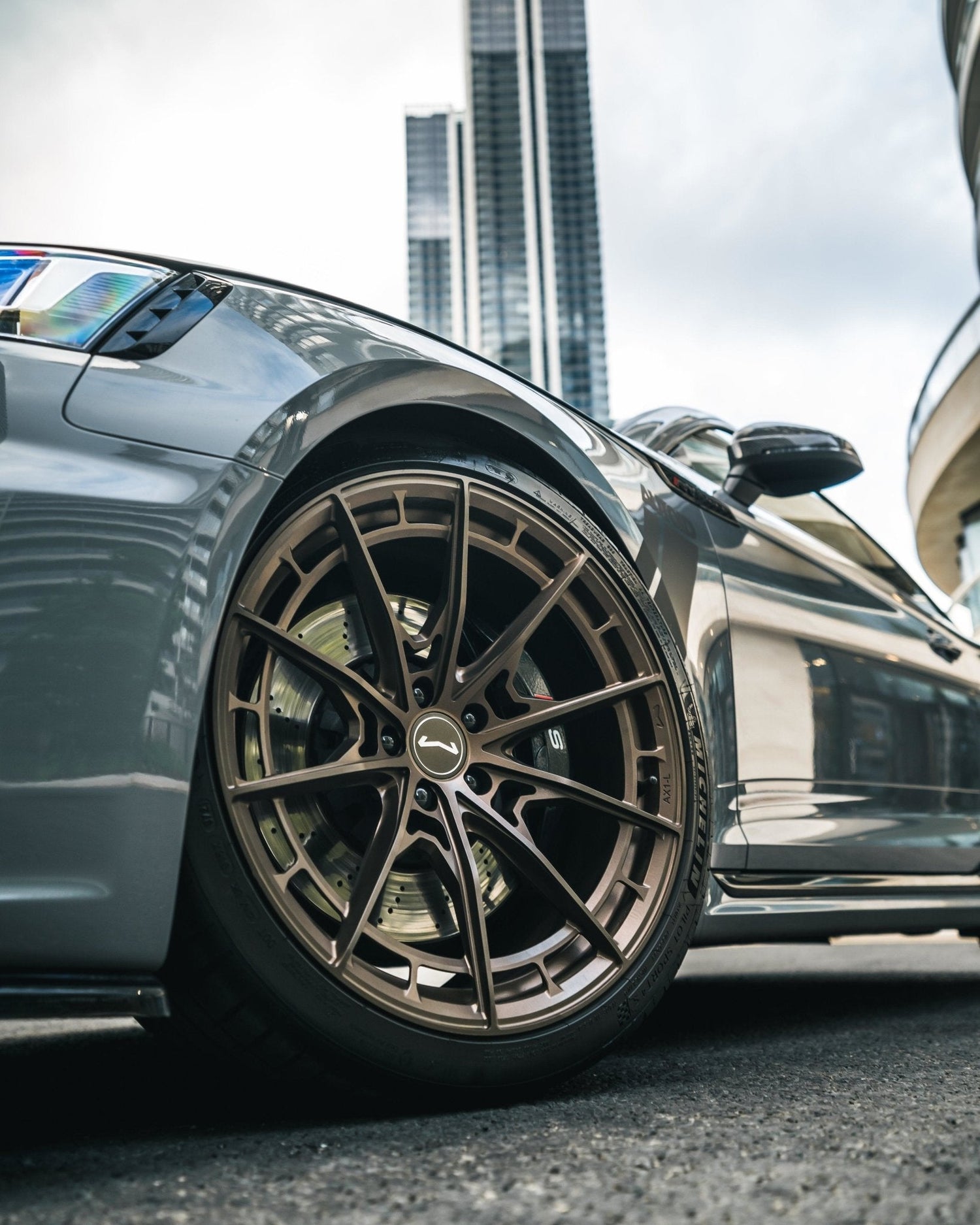This project has been a lot of fun for me. It’s my first ‘proper’ performance car (i.e. AMG, RS, ///M). I could go as far as saying it’s a proud moment also, owning something like this was a bit of a pipedream thinking back a few years to the inception of AUTOID. We’ve come a long way, and to see this car in an almost-complete form is very cool.
It’s worth me recapping on the car for those of you that are new to the store. Welcome, by the way. It’s an 2017 Audi RS5, Nardo Grey. 450bhp, 600nm, Quattro All-wheel Drive. She’s been well cared for, too. Since purchased, we’ve had a 2-stage machine polish paired with a 2 year ceramic coating. First mods included a resonator delete from the stock Sports Exhaust, Gloss Black Badges, 25mm lowering springs, 15mm square spacers and Gloss Black Maxton Front Lip & Rear Valance.
I won’t waste much more time. The reason you clicked. The wheels. Dillinger AX1-L’s. Forged. 19”. 11kg per wheel. Bespoke engineered. I’m in love. They have transformed the car and made it one of a kind. Combined with the brand new TTRS rear wing and the now cracked 🥲 Maxton front lip, the car looks like a DTM Edition (not my words by the way, the words of Mr Joe Achilles).

A bit of backstory on the wheels, the brand that made them and the concept of the design. First off, Dillinger. It’s likely you haven’t heard of Dillinger Wheels prior to landing on our website and that’s not a bad thing. They are a fresh take on a relatively mature section of the automotive industry. One of the major new growth areas in wheels is the move to forged manufacturing.
What are Forged Wheels and how do they compare to Cast Alloy Wheels?
Traditionally, alloy wheels are cast alloy, the aluminium alloy is brought up to a high enough temperature to melt it into a liquid. The liquid aluminium is then poured, injected, or drawn by a vacuum into a mould. The net result of this is an alloy that has a random grain structure, which essentially means they’re not as strong as they can be. Most stock alloy wheels are cast alloy due to the ease of production and therefore lower cost.
Forged wheels take on a more intense process. A large metal slug is heated up to the points is pliable, its then placed into a huge forging press (these can be up to 3 stories in height, in fact the entire building is usually built around the machine), where they’re either struck (mechanical press) or compressed (hydraulic press) into a formed die. The final form is then machined using a 5-axis CNC to create the desired design. The net result is an alloy with grain structure that is long, and continuous. A forged part is therefore stronger, so the part can be made thinner, and therefore lighter.
Dillinger Wheels made the decision very early on to only build their wheels to the highest quality possible, therefore they had no choice but to go with forged wheels.
So, what’s next for the RS5? Well we haven’t really touched the performance side of the car yet, which makes sense given our business is all show, no go (being the styling shop). But we do have some really great friends in the industry, so perhaps we’ll be paying them a visit soon to work on those dragy times.































Leave a comment
All comments are moderated before being published.
This site is protected by hCaptcha and the hCaptcha Privacy Policy and Terms of Service apply.